It’s summertime and I’ve been wanting to tackle a fitted woven pattern for awhile. I have NO idea what I was even thinking, but a gazillion months later and we finally have a pattern to share. This one is currently available in the miss size range only as we had some drafting uncertainties with the girls’ range that caused me to put a hold on that release. But we still have a gorgeous pattern to share and an add-on as well so let’s get into this.

The basics for the Miss Forest dress are as follows:
- Fitted bodice with princess seams
- Optional cap sleeve insert
- Optional side cut-outs
- A line flare skirt in 2 lengths – short or midi
- Optional centre front panel on the skirt
- Y back or V back options for the…. yup, the back
- Invisible zipper closure at center back
- Optional pockets
- A, B, C, and D cup bodice pieces
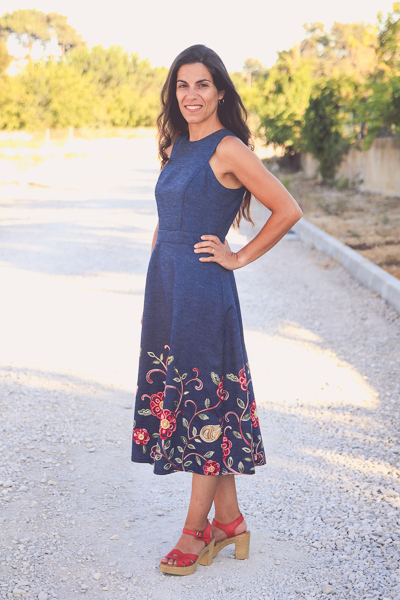
We have a LOT to share about what we want you to know before you make your Miss Forest dress and let’s start with fit expectations. The bodice is meant to skim the body nicely without being too tight and then transitions into an elegant A line flare skirt. The end shoulder points are narrow and the neckline is quite high. The cap sleeve insert covers the shoulders while also bringing interest to the princess seams. The back brings a bit of drama with the Y back option that closes on the shoulder with a few different closure options or keep it simple with the V back.

What to expect with a fitted woven bodice:
I’d love to say this pattern is going to fit you perfect first try, but that would mean I was at your house and drafting it for you personally and, well, I just don’t have that kind of budget. After making a couple for myself and then watching the testers make theirs, it was very clear that everyone needed to do some type of adjustment and the amount and type of adjustments were completely reliant on the fabric they chose and how close their measurements were to the size they were making. It might be tempting to assume a pattern SHOULD fit just right off the printer, but here’s an example of why adjustments are so common and should be expected:
The size 12 waist is drafted for a 31″ natural waist. You have a measurement of 31 1/2″. A quick look at the finished measurements chart show that the waistband for size 12 is 32″ which is only giving you 1/2″ ease. You’re gonna start noticing it when you sit down! Now, maybe your fabric has a good amount of mechanical stretch. Chances are it’ll stretch out a bit giving you the 1″ ease and you’ll be fine. Or maybe you want to err on the side of sizing up so you check the size 14. The finished measurement for that size is 33 1/2″ which will be 2″ of ease. Now you have a choice to make. You’re going to choose which waist size you’re going to start with knowing that you will be either letting out the seams for a bit of room or taking them in to retain the fitted look.
This same consideration is made for the bust, the length, the hip, all over the body as we recognize our individual shape and seek to create our best fit. While a half inch isn’t anything to be concerned about on some knit fabrics or some looser designs, we’re talking about a fitted woven and in this case a 1/2″ can make a world of difference so don’t ignore those measurements.
Here’s another example as to why adjustments should be expected:

This tester did 2 dresses with identical options but used different fabrics. The pink is a viscose linen and the blue is a more structured woven. There are 2 things that you can see on this comparison that show how fabric behaves differently. If you look at the side cut-out you noticed that one sits lower and a bit looser. The second is the skirt length. I DID add some length to the pattern before she made the pink one, but not as much as the difference you see here. Overall, the drapier fabric gave a longer garment and a slightly looser fit. Different adjustments were already made for the bodice fit as she sewed dependent on the fabric.
Seam allowance errors:
Here’s just a little math for you to keep in mind when you’re sewing. Miss Forest has 7 vertical seams around the bodice – side seams, princess seams, and the zipper. If you are off from the required seam allowance by only 1/16″ on every seam, you will have a difference of 7/8″ either too big or too small on your finished garments. In some cases that’s a full size. If you’re off by 1/8″ on each seam, you’ve now got a difference of 1 3/4″ of either too much or too little ease!!!! That’s close to 2 sizes in some areas. I don’t know if that shocks you at all, but it sure keeps me vigilant while I sew! That adds up fast, but it also shows that you have lots of seam allowance to play with when you need to make adjustments so rather do your fit checks along the way and fine tune what you need to.
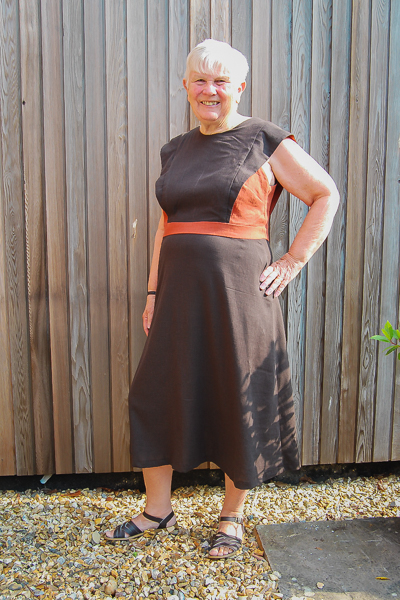
Fabric drama:
I’ve been quite open with our testers that I’m not great when it comes to fabric knowledge. I’m pretty good at telling how it will behave once it’s in my hands, but to tell you names of fabrics and match those names to fabric behaviour is where I fall apart. So bear with me as I try to be helpful here.
I’m going to chat about the apparel wovens because this will be used the most for these dresses especially in the Miss range. There’s a bit to say about this.

Miss Forest fabric:
This dress was first imagined in fabrics with some amount of structure and yet I was pretty sure there would be a variety of fabrics that people would want to use. And THAT was probably my biggest battle in this test – trying to create a pattern that would work with all types of fabrics. Once I admitted to myself that was not actually possible, I had to choose what I would draft for and then do my best to let people know how the rest of the fabrics can still be used and what adjustments should be expected. Because you CAN make this with a variety of fabrics, but you simply MUST be aware that they have their quirks that need to be considered before starting.
The structured fabrics that don’t have a lot (if any) mechanical stretch are the easiest to work with. We’re talking about lightweight twills or denims, sateen…. those kinds. (yes, I ran out of fabric words already.) They retain their shape well and for a fitted bodice, you want that crisp, clean look. The cons for this fabric is that it may feel a bit more snug than you wanted specifically if you are on the upper end of any particular size. The high drafted neckline will be more noticeable both because the fabric isn’t draping at all like other kinds, but it’s also kinda stiff and not as soft on that edge like some other fabrics will be. Take a bigger seam allowance or scoop out the front neckline to keep that curve comfortable when using these types of fabric.
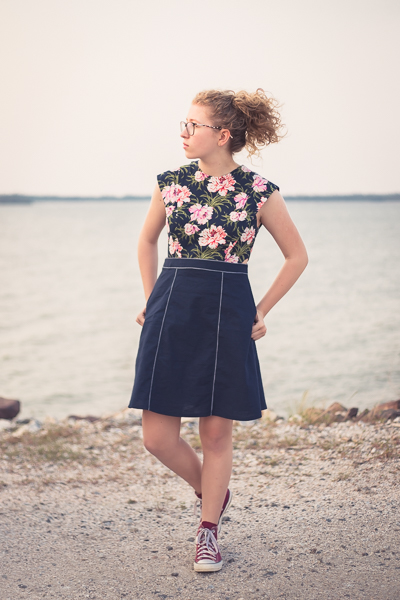
Then we have fabrics that are “shifty”. You know those ones that you cut out and the moment you move the piece it takes on a whole different shape? I think of rayon when I think of shifty. These fabrics have a lot of drape and it automatically hangs longer than you cut it because of that drape. This fabric isn’t impossible for a fitted bodice, but it demands a bit of extra attention. You want to staystitch more seams and consider interfacing areas like the side opening. Some people even choose to interface the whole bodice. I 100% expect to have to adjust the garment for fit with these fabrics. I might need to remove some length if it’s hanging too long or remove some width so it’s snug where it needs to be.
These types of fabric are also noticeable when choosing the center panel skirt option. The amount of drape in the skirt will fall significantly longer than the vertical stitch lines and will need to be considered for whatever final look you want to achieve.
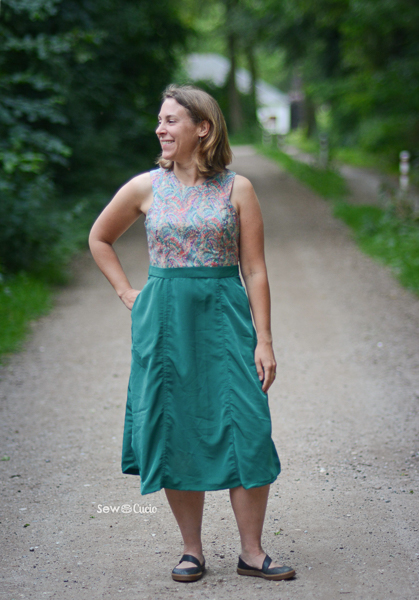
Now to the “growing” fabrics. This is stuff like linen. It has great structure and people love wearing it, but it typically stretches out while sewing and for sure when wearing so a fitted bodice won’t stay fitted long with this fabric!! These fabrics are very much the same as the shifty ones and often you’ll find fabrics that are both shifty AND growing – like linen blends. Same considerations should be taken regarding stay stitching and interfacing. Don’t be surprised when you put it on for a fit check and it feels huge. Use those seam allowances to gradually remove the width you need and don’t forget to sit down while you decide how much to remove! Our body shifts when we sit and some parts of our garments need more room for sitting than others. (Like the waist.)
Remember that every time you wash your garment it will shrink up for a bit before it relaxes again. I choose to hang dry my viscose linen dress so it doesn’t shrink up since I did my fit adjustments based on how much the fabric grew after some wear. I can tell you that this dress snug right out of the wash and after a couple wears it’s a big loose and ready to be shrunk up again.

Interfacing:
One of our testers did a side by side test on interfacing the cap sleeve inserts. This is another linen fabric and you can see that it does add nice structure to the sleeve on the side she’s holding her phone. Definitely something to consider when choosing your fabric and deciding how you want the cap sleeve to look.
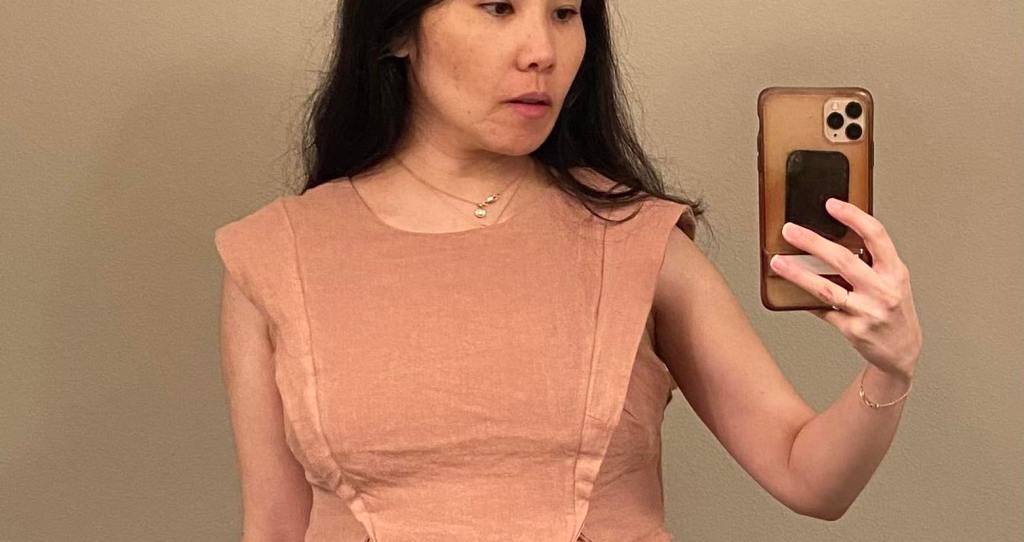
In the Miss Forest size range, we have a special add-on that you’ll want to check out. I’ve moved that into a different blog post so head HERE to read about how to further expand this pattern. Here’s a peek.
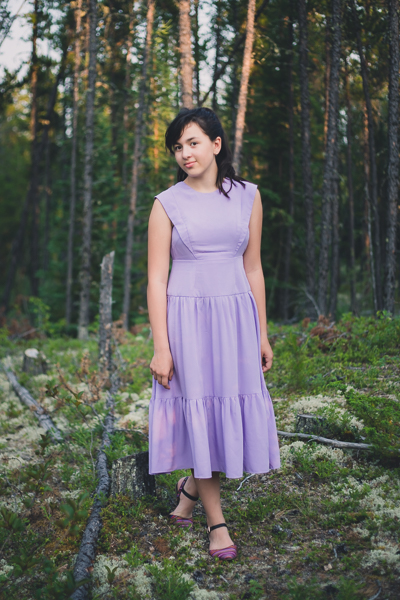
Remember we want to see your Sofiona makes! It truly makes our day and especially when we know you’ve challenged yourself as we know a lot of our patterns DO challenge the new sewist. We know you can do this! Ask your questions in the Sofiona FB Group where we have great testers who have learned with us already. They are amazing at helping us to answer your questions.
As always, I leave you with a few more tester pictures.
#sofionadesigns #sofimissforest #sofijuniormiss


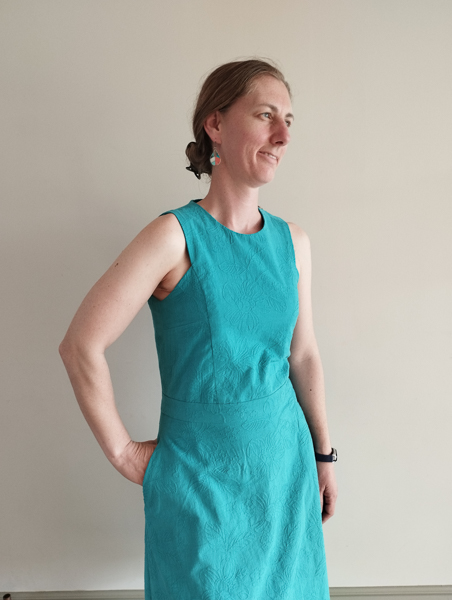


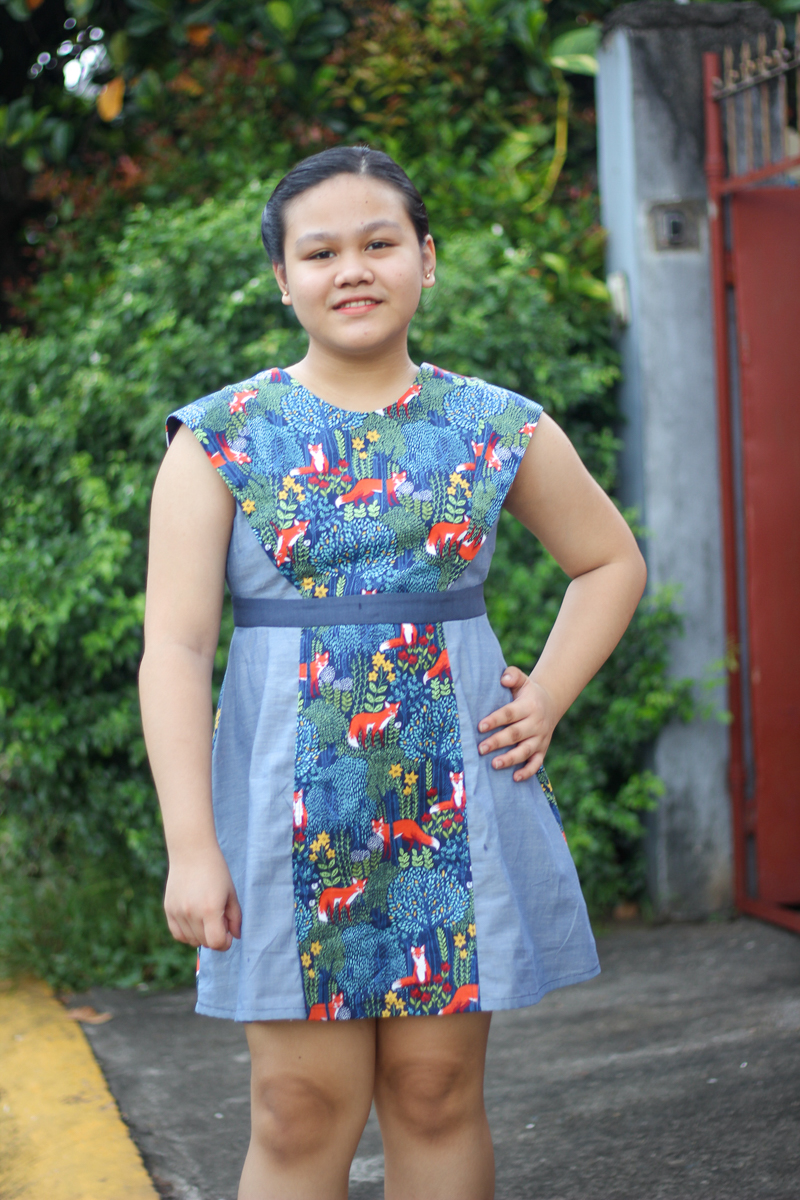
2 thoughts on “The Forest Dress”